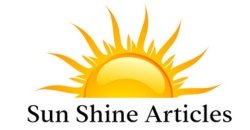United States Pressure Transmitter Market Overview
Market Size in 2024: USD 981.7 Million
Market Forecast in 2033: USD 1,097.6 Million
Market Growth Rate: 1.25% (2025-2033)
According to the latest report by IMARC Group, the United States pressure transmitter market size reached USD 981.7 Million in 2024. Looking forward, IMARC Group expects the market to reach USD 1,097.6 Million by 2033, exhibiting a growth rate (CAGR) of 1.25% during 2025-2033.
United States Pressure Transmitter Industry Trends and Drivers:
As industrial businesses increasingly give precision measurement and real-time process monitoring top priority to maximize operating efficiency, the United States pressure transmitter market is gaining momentum. From energy to pharmaceuticals, several sectors are adopting sophisticated sensor systems to satisfy challenging application requirements. Particularly in flow, level, and pressure control applications, pressure transmitters are facilitating precise data gathering in challenging settings. Manufacturers are creating transmitters with multipurpose capabilities and strong environmental tolerances as the need for intelligent instrumentation grows. Particularly multivariable transmitters are proving to be very useful since they bring several factors into one tool, so simplifying system design and lowering maintenance cost. Simultaneously, capacitive and piezoelectric systems are becoming more widely used in demanding applications where durability and reactivity are crucial. These developments are helping pressure sensors to be more important in improving process stability, safety, and efficiency in both old and next-generation systems.
By requesting specialized solutions fit for their operational surroundings, end-use sectors are steering market trends significantly. Pressure sensors are helping upstream and downstream operations in oil and gas via ongoing monitoring in high-pressure and high-temperature regions. While water and wastewater utilities are using these tools to control flow consistency and detect anomalies in real time, the power generation industry is utilizing these instruments to maximize steam distribution and boost turbine performance. Hygienic designs and digital calibration in pharmaceuticals and food processing are helping to meet exacting quality criteria and regulatory systems. Industries for chemicals, pulp and paper, and metals and mining are turning their attention toward ruggedized transmitters that can survive corrosive or abrasive environments yet maintain great sensitivity. OEMs and service providers are being pushed by this application-specific development to improve modularity, connectivity, and integration with SCADA and IoT systems, therefore speeding market penetration and lifetime efficiency.
Supported by a concentration of manufacturing plants and automation-driven production lines, the Midwest is showing robust industrial adoption regionally. Leading in pressure transmitter deployment inside the petrochemical and energy industries, where accurate measurement under severe conditions is still paramount, is the Gulf Coast. Pharmaceutical and biotechnological firms in the Northeast are putting money in high-accuracy tools for aseptic processing systems and cleanroom environments. Through intelligent infrastructure projects including grid modernization and water conservation, the Western United States is fostering innovation. At the same time, the Southeast’s pulp, paper, and food processing sectors are seeing increasing demand. Demand is growing across all areas for digital-ready pressure sensors that offer predictive analysis, enable remote diagnostics, and fit with company-wide digital transformation plans. The U.S. pressure transmitter market is becoming a major enabler of performance improvement and industrial resilience between 2033 as sectors keep changing toward automation and smart operations.
Download sample copy of the Report: https://www.imarcgroup.com/united-states-pressure-transmitter-market/requestsample
United States Pressure Transmitter Industry Segmentation:
The report has segmented the market into the following categories:
Breakup by Type:
- Absolute Pressure Transmitters
- Gauge Pressure Transmitters
- Differential Pressure Transmitters
- Multivariable Pressure Transmitters
Breakup by Sensing Technology:
- Strain Gauge
- Capacitive
- Piezoelectric
- Others
Breakup by Fluid Type:
- Liquid
- Steam
- Gas
Breakup by Application:
- Flow
- Level
- Pressure
Breakup by End Use Industry:
- Oil & Gas
- Power Generation
- Water & Wastewater
- Food & Beverages
- Chemicals
- Metals & Mining
- Pulp & Paper
- Pharmaceuticals
- Others
Breakup by Region:
- Northeast
- Midwest
- South
- West
Competitive Landscape:
The competitive landscape of the industry has also been examined along with the profiles of the key players.
Key highlights of the Report:
- Market Performance (2019-2024)
- Market Outlook (2025-2033)
- COVID-19 Impact on the Market
- Porter’s Five Forces Analysis
- Strategic Recommendations
- Historical, Current and Future Market Trends
- Market Drivers and Success Factors
- SWOT Analysis
- Structure of the Market
- Value Chain Analysis
- Comprehensive Mapping of the Competitive Landscape
Note: If you need specific information that is not currently within the scope of the report, we can provide it to you as a part of the customization.
Ask analyst for your customized sample: https://www.imarcgroup.com/request?type=report&id=2865&flag=C
About Us:
IMARC Group is a global management consulting firm that helps the world’s most ambitious changemakers to create a lasting impact. The company provide a comprehensive suite of market entry and expansion services. IMARC offerings include thorough market assessment, feasibility studies, company incorporation assistance, factory setup support, regulatory approvals and licensing navigation, branding, marketing and sales strategies, competitive landscape and benchmarking analyses, pricing and cost research, and procurement research.
Contact Us:
IMARC Group
134 N 4th St. Brooklyn, NY 11249, USA
Email: sales@imarcgroup.com
Tel No:(D) +91 120 433 0800
United States: +1-631-791-1145

